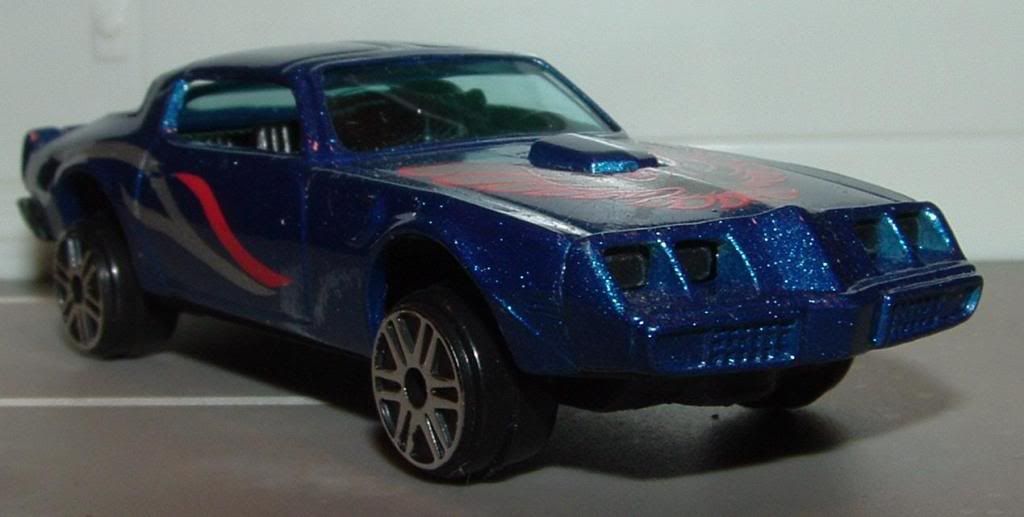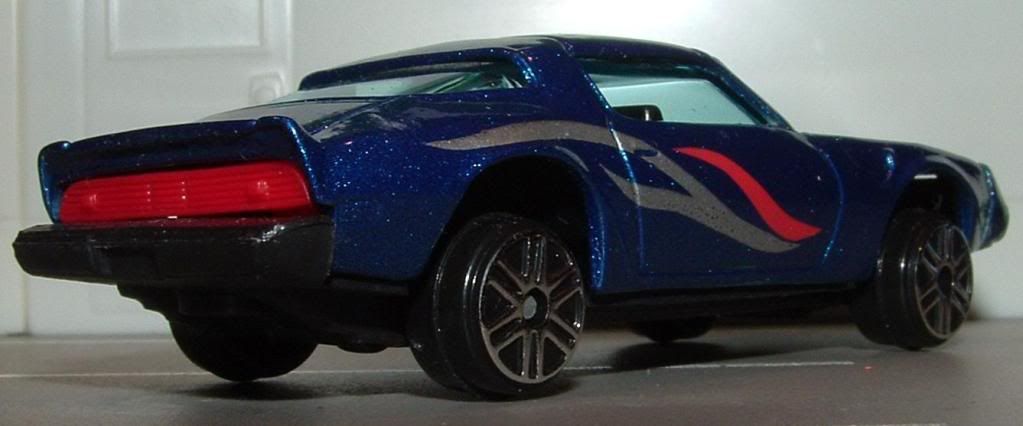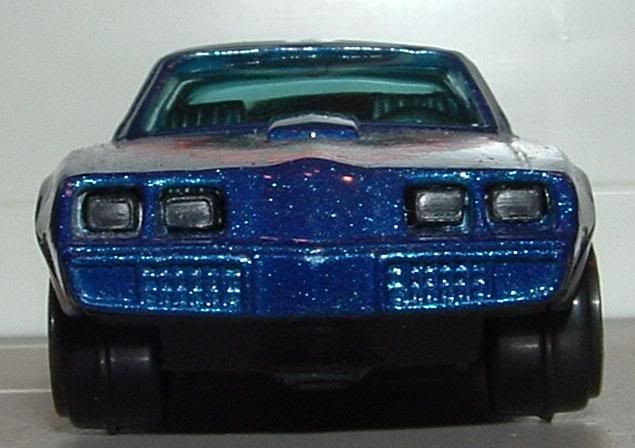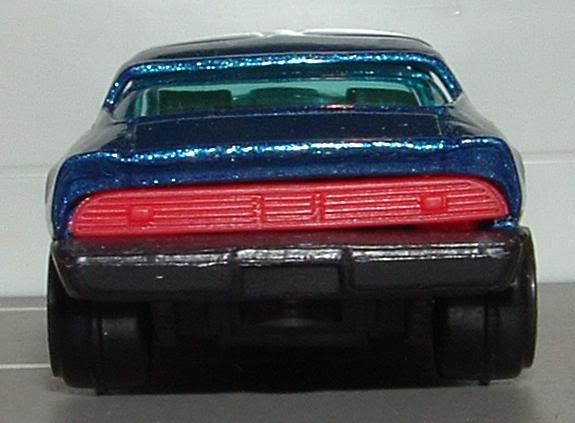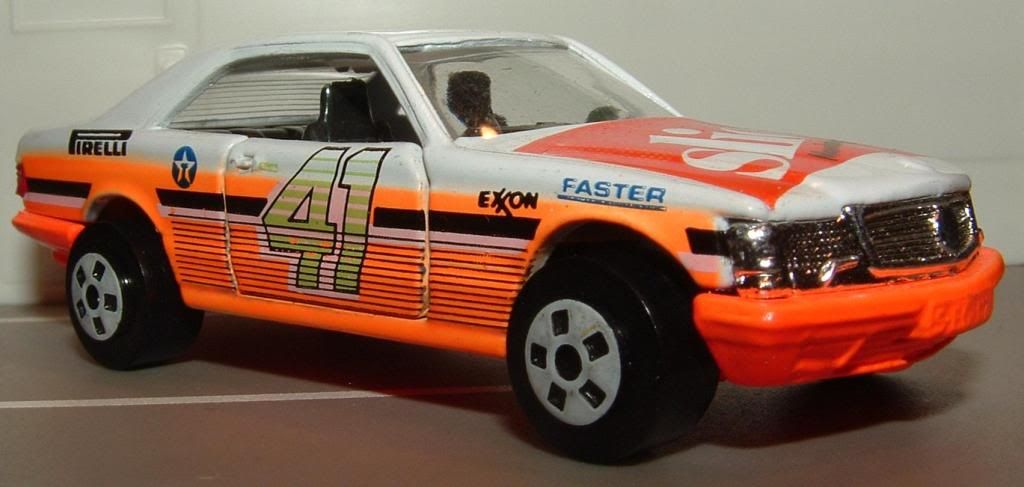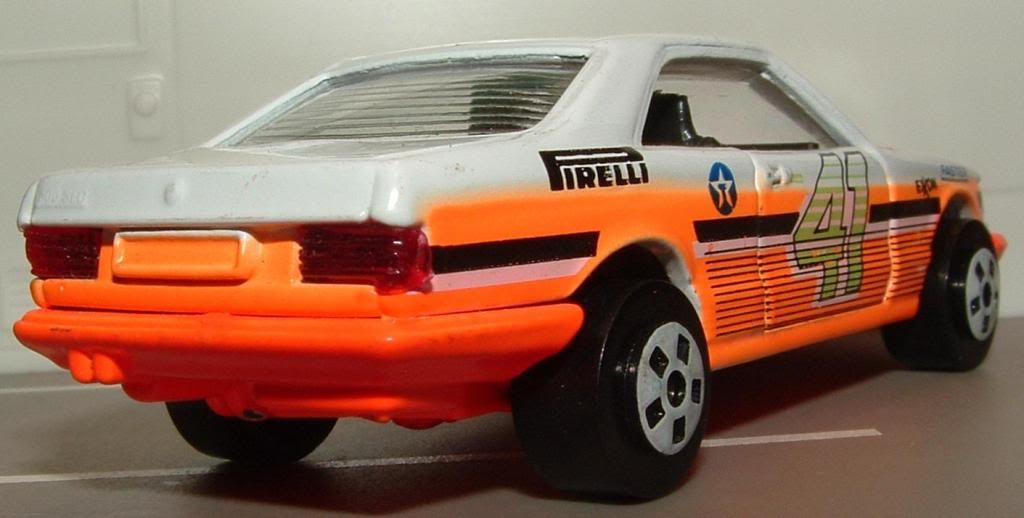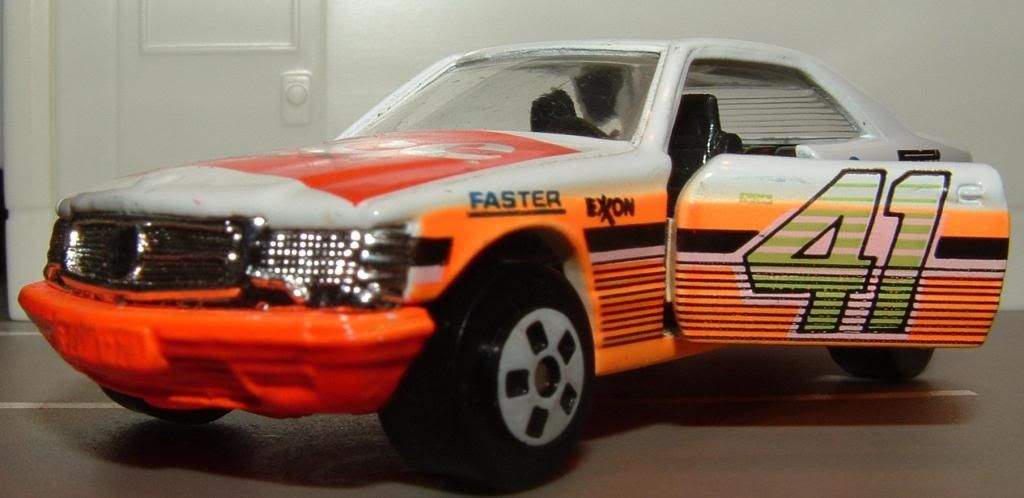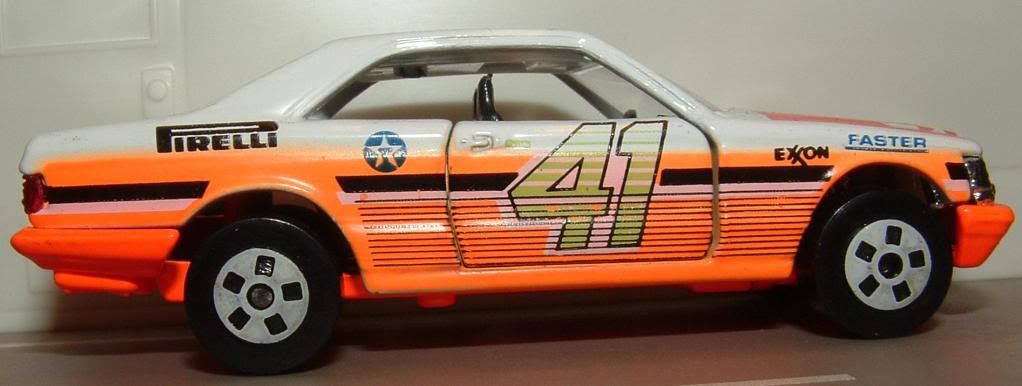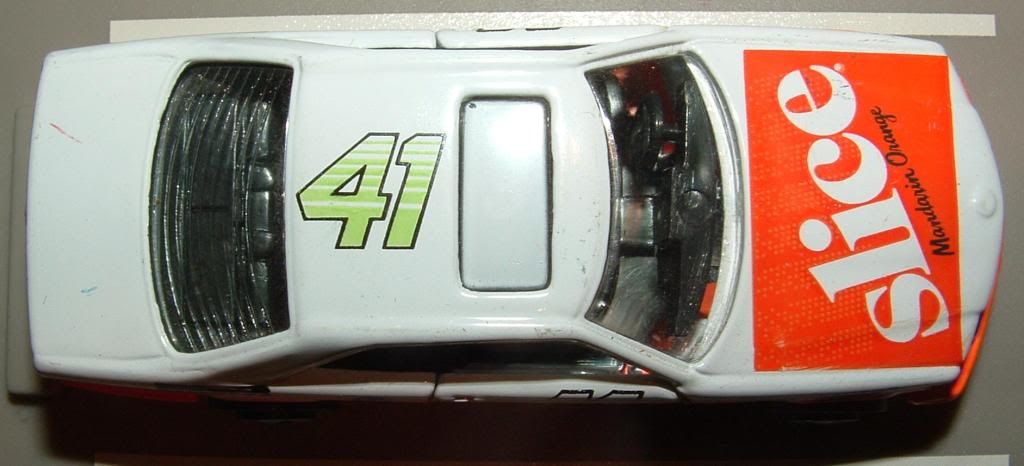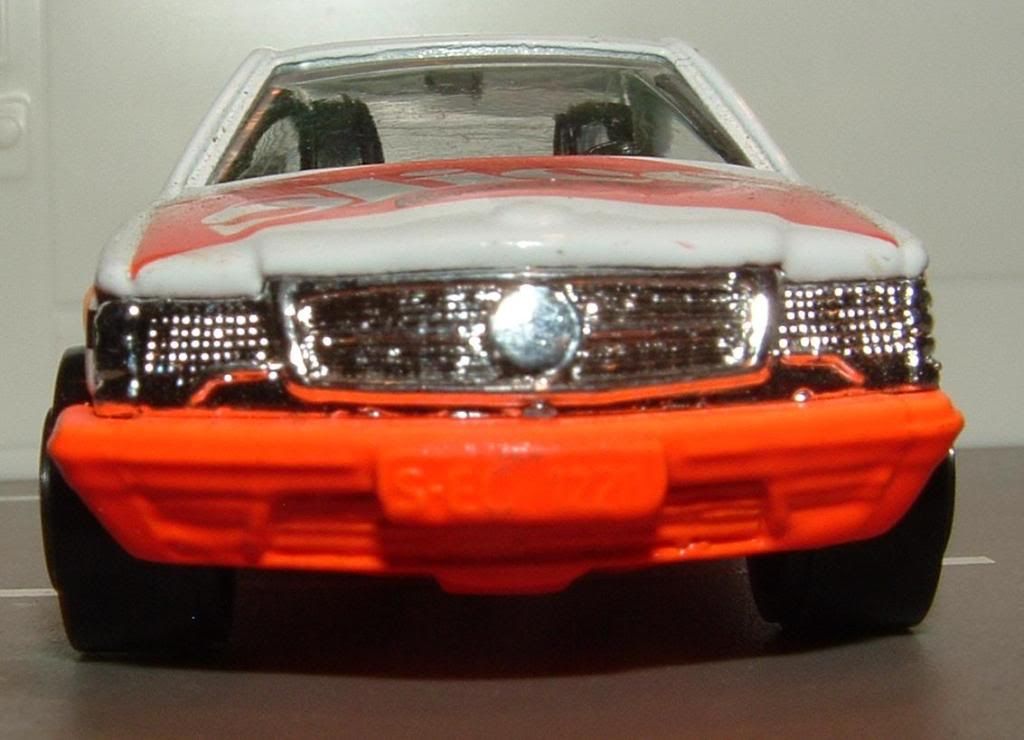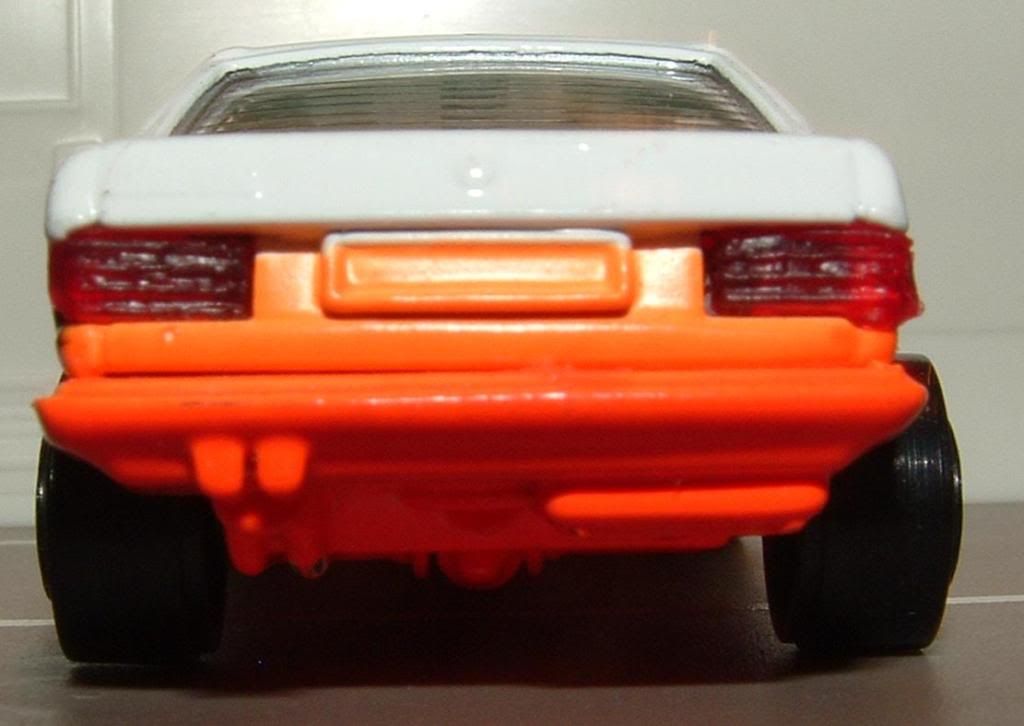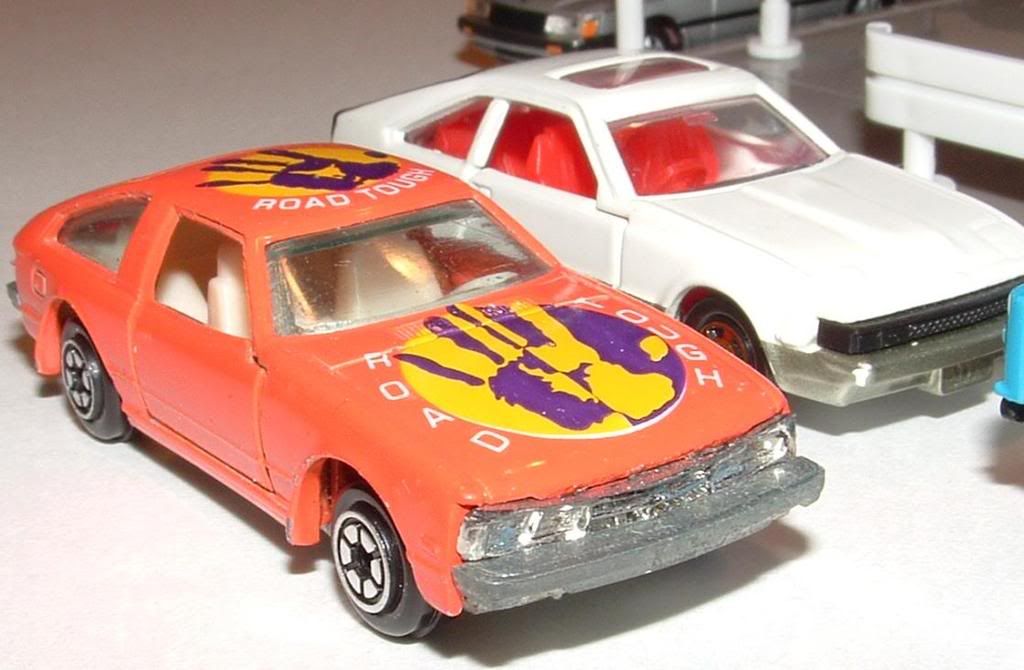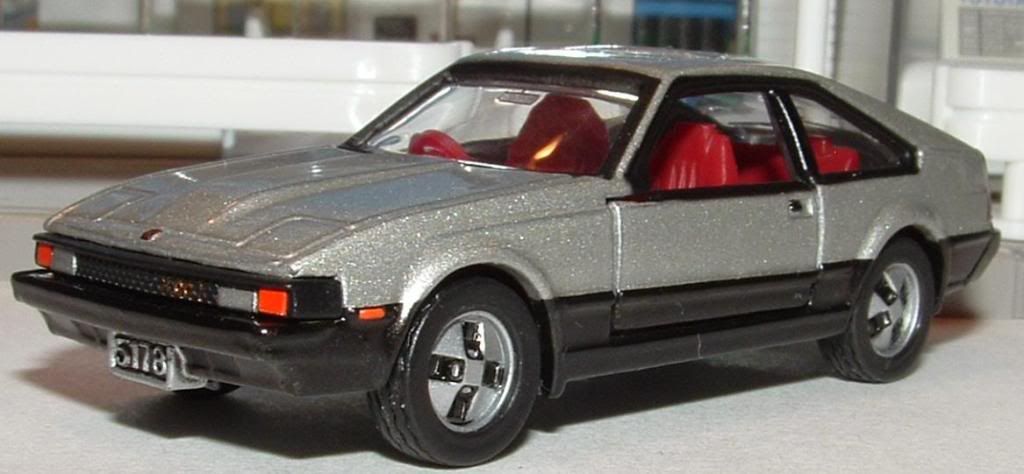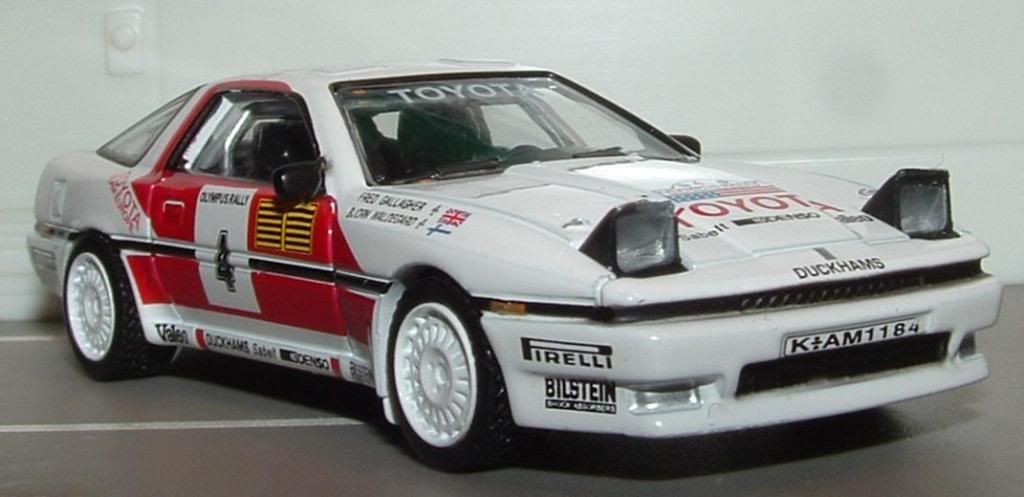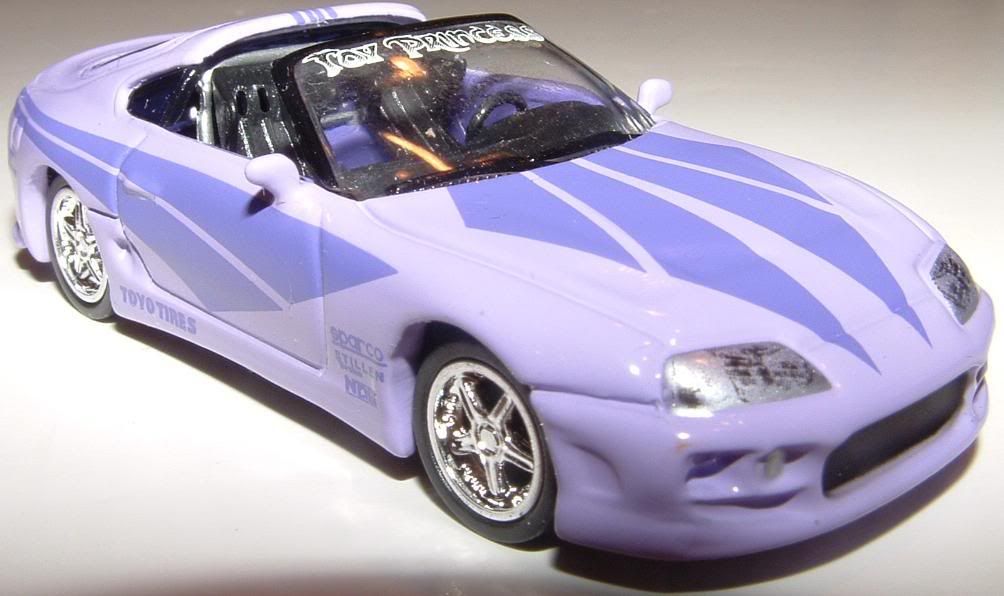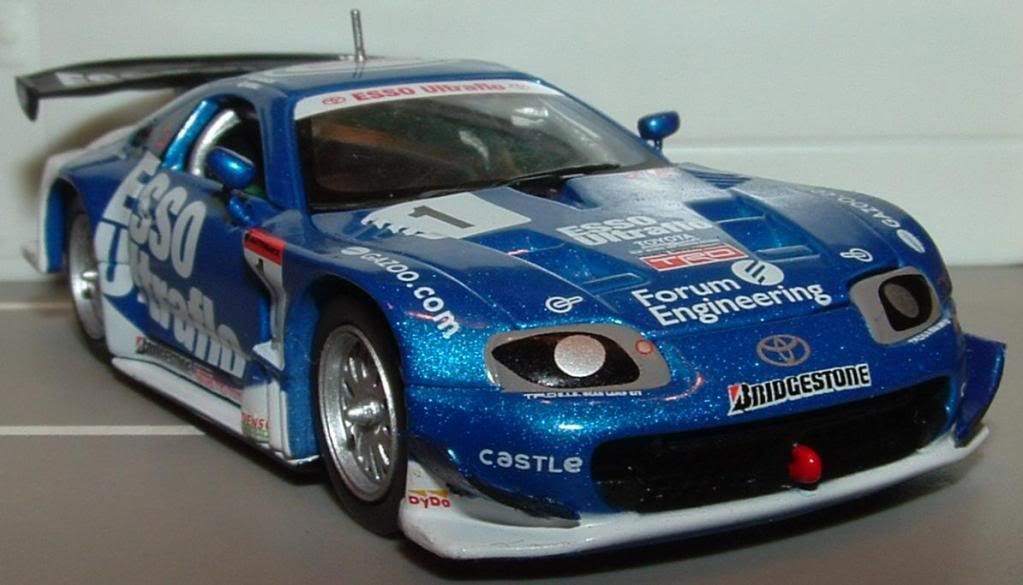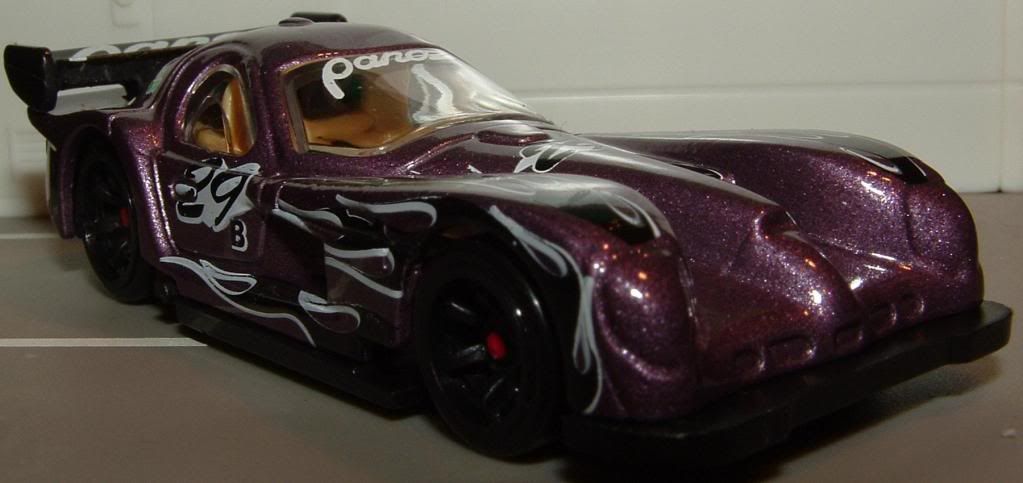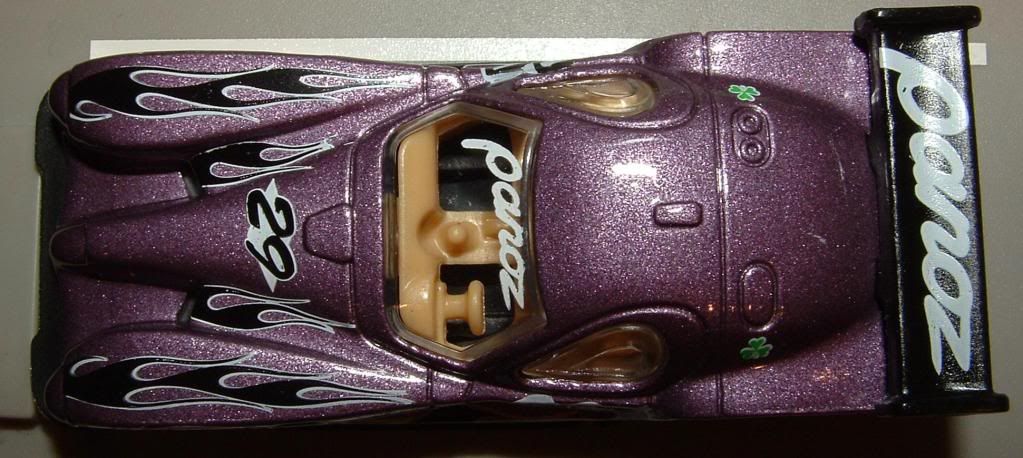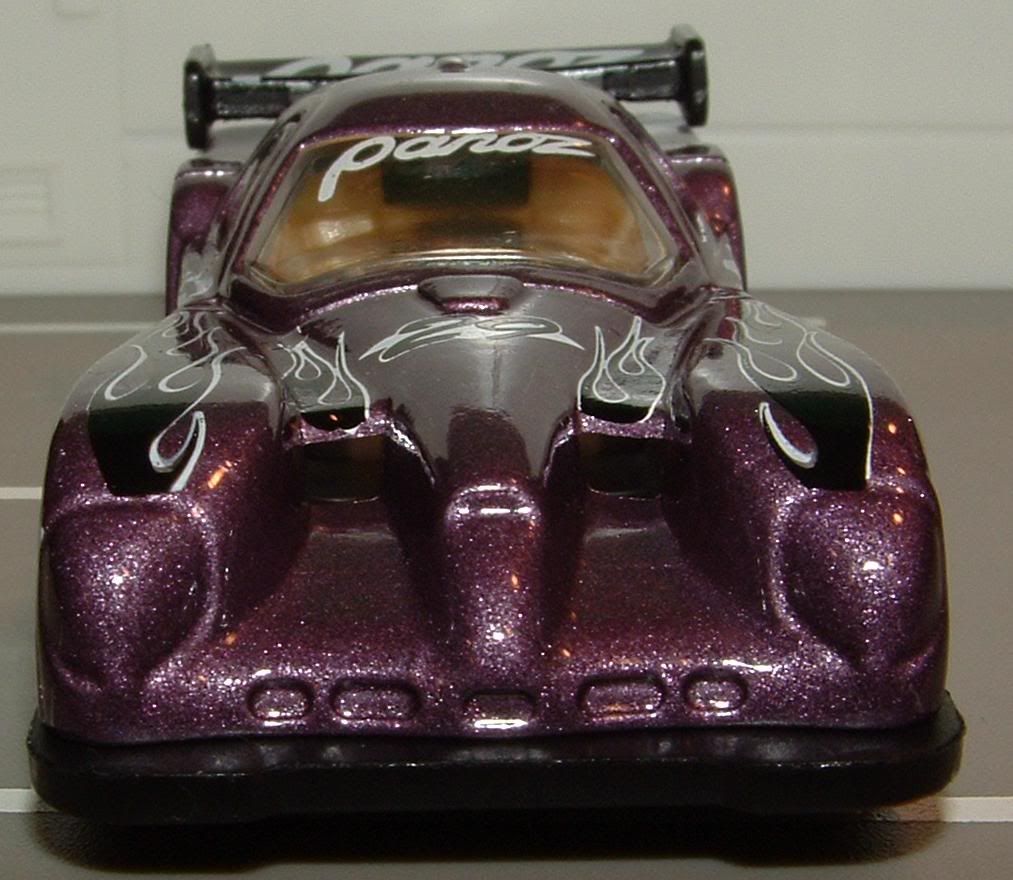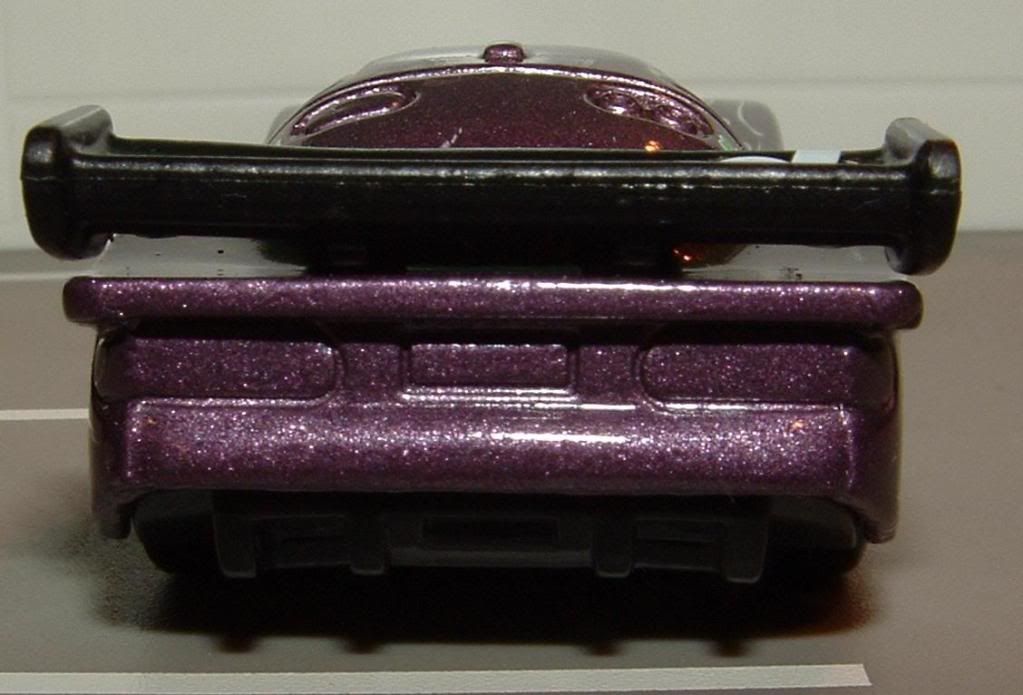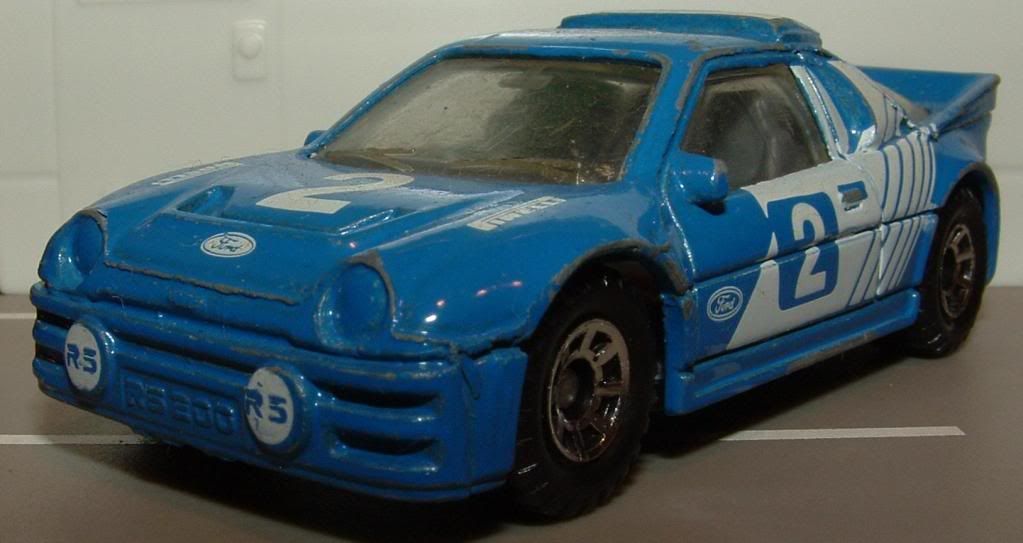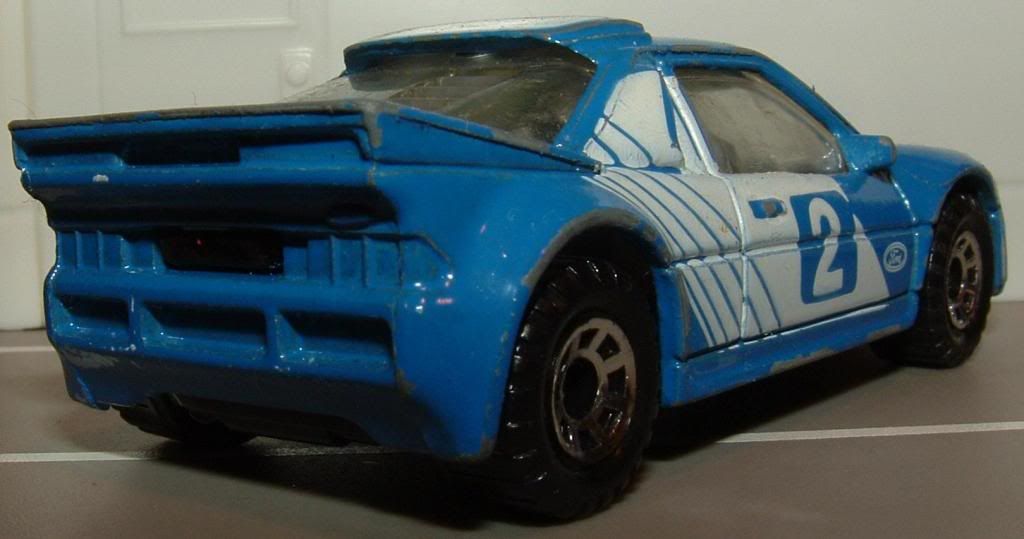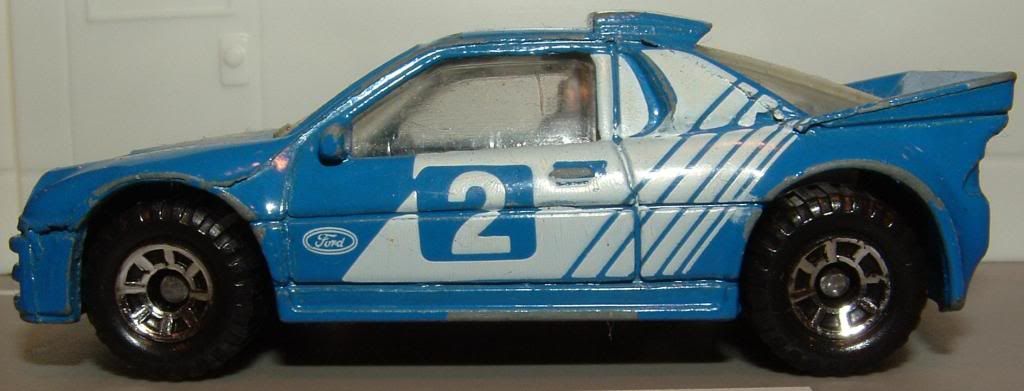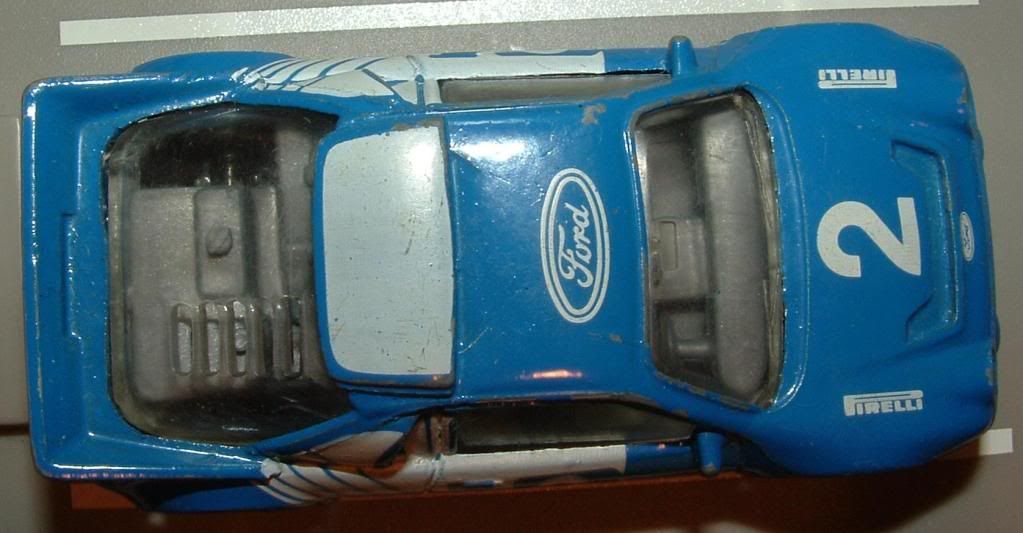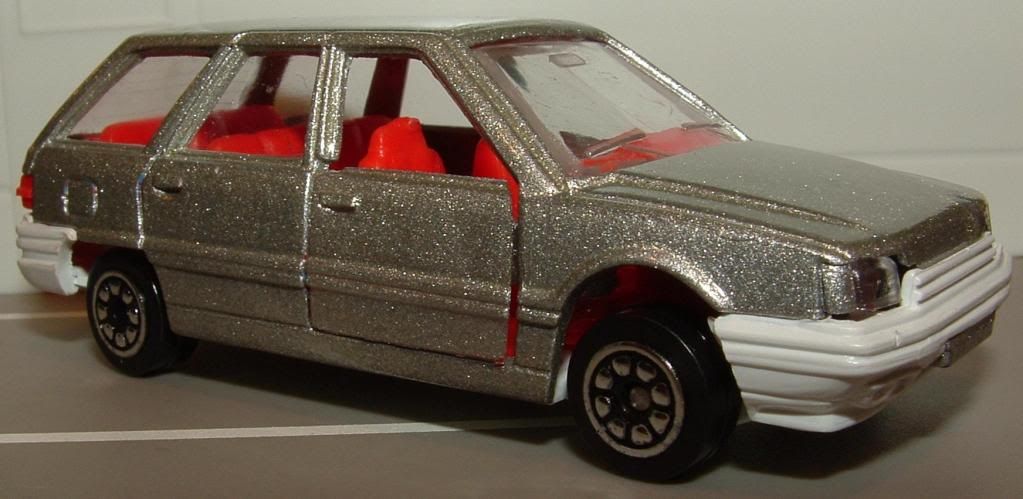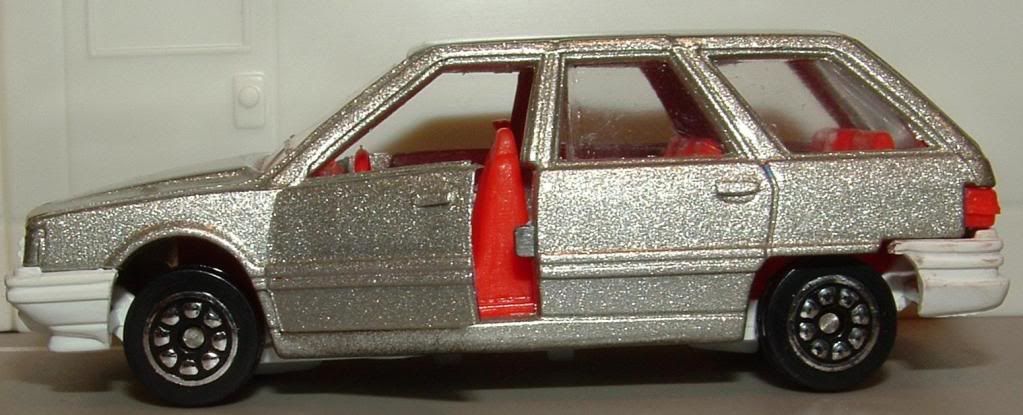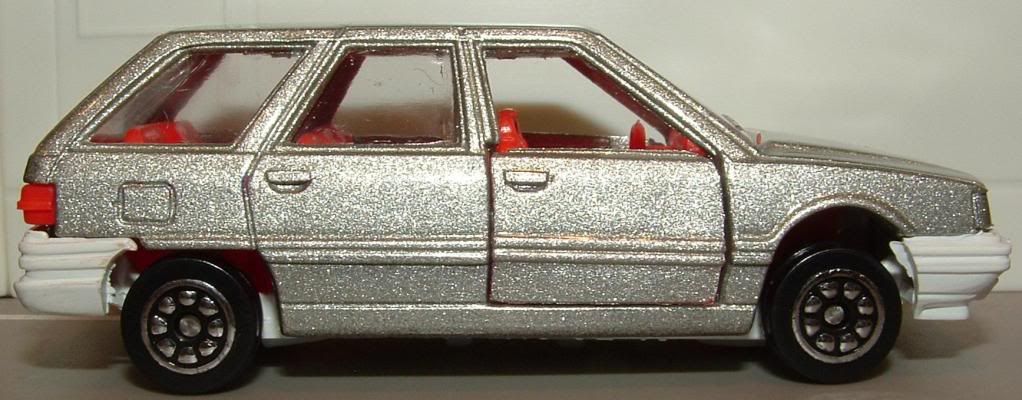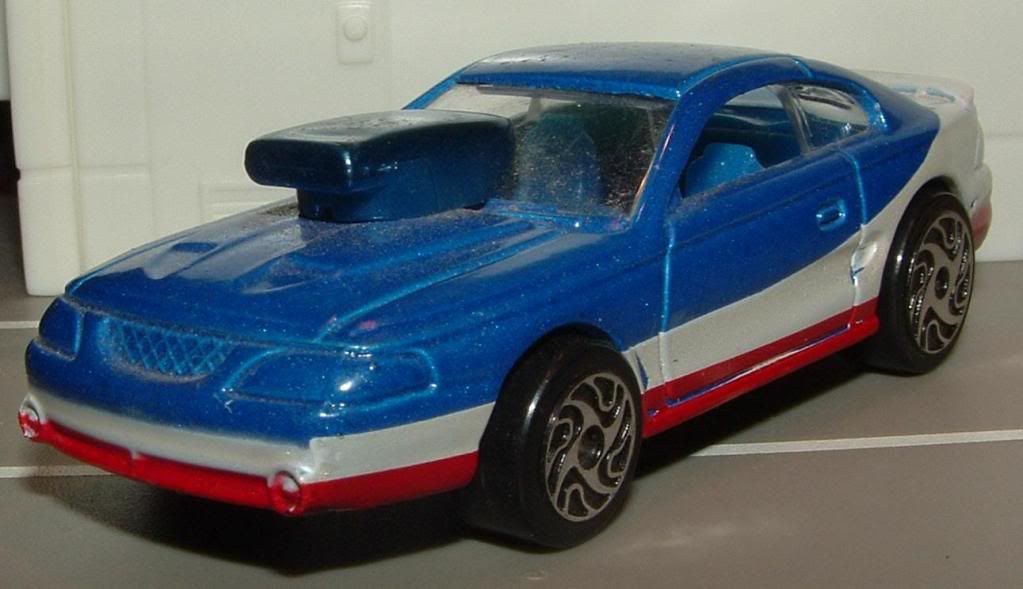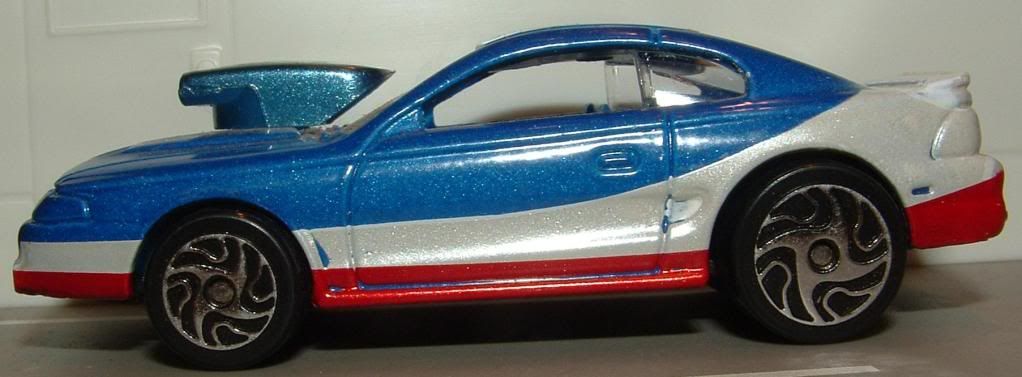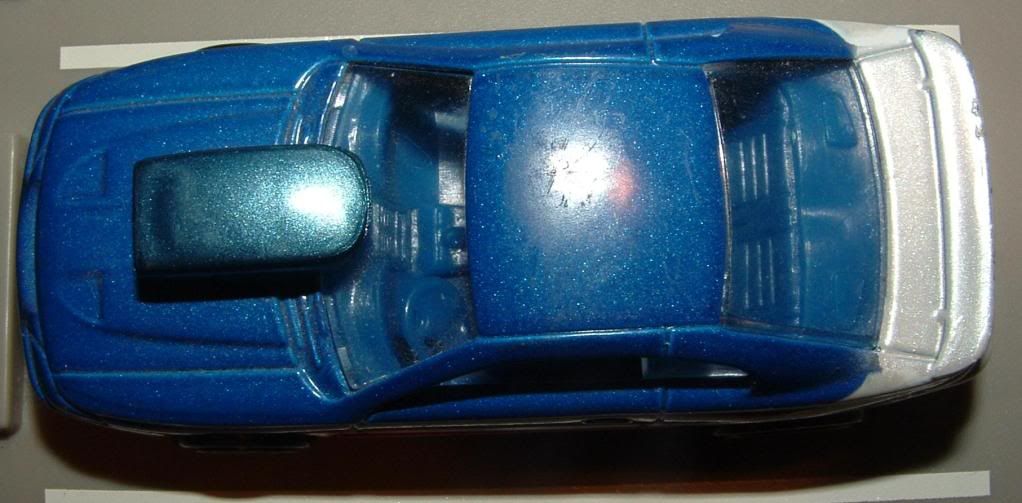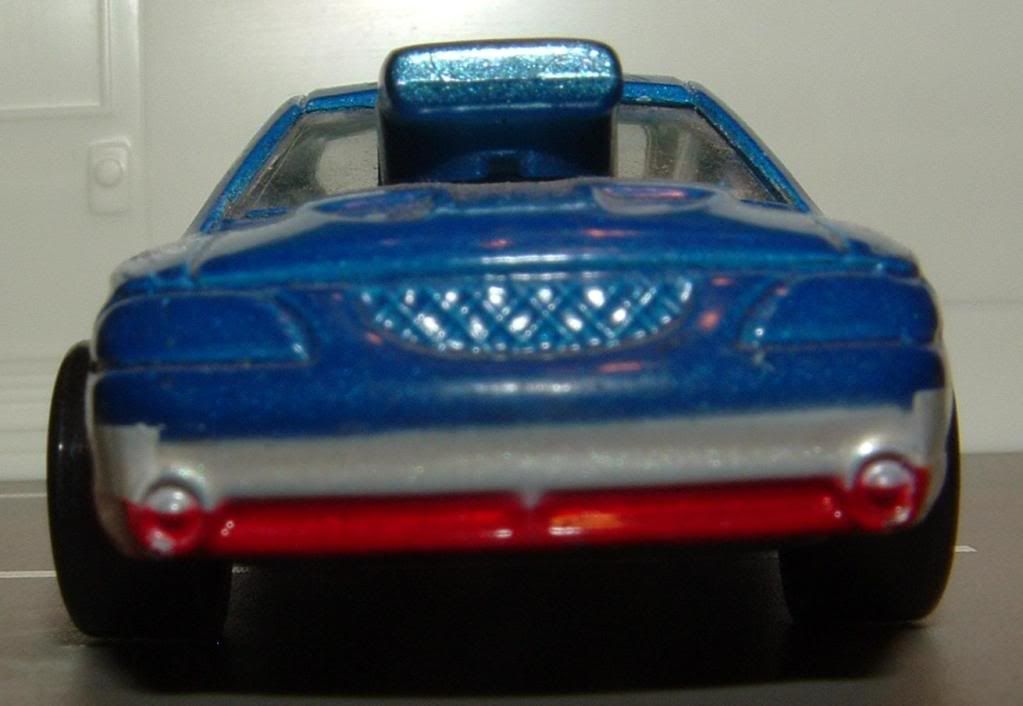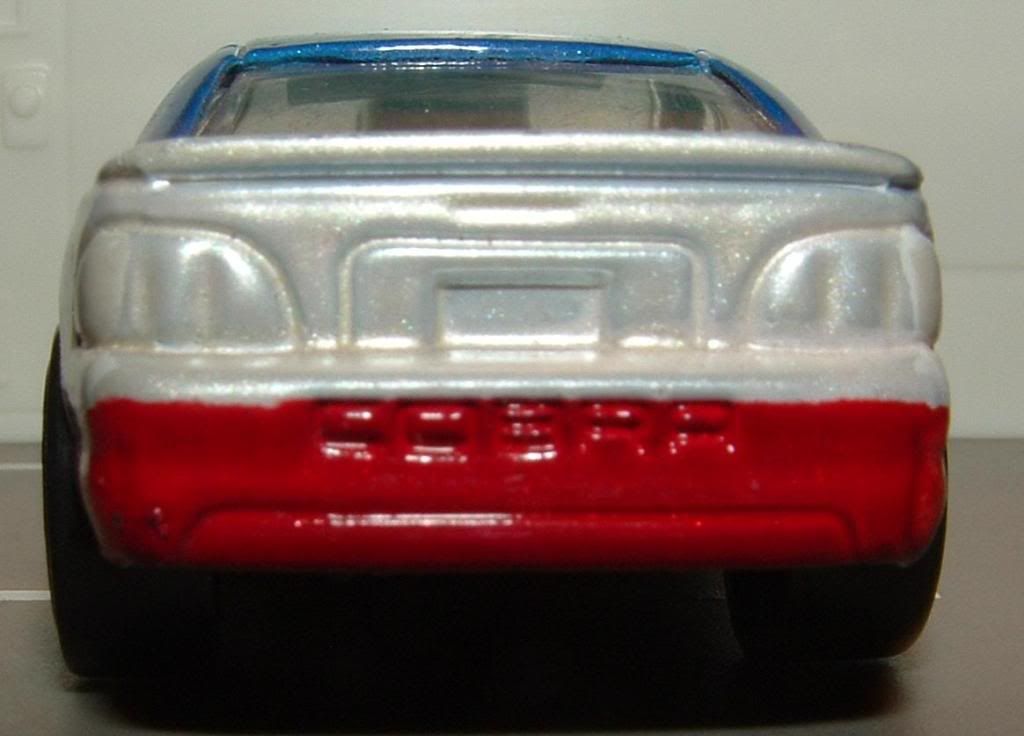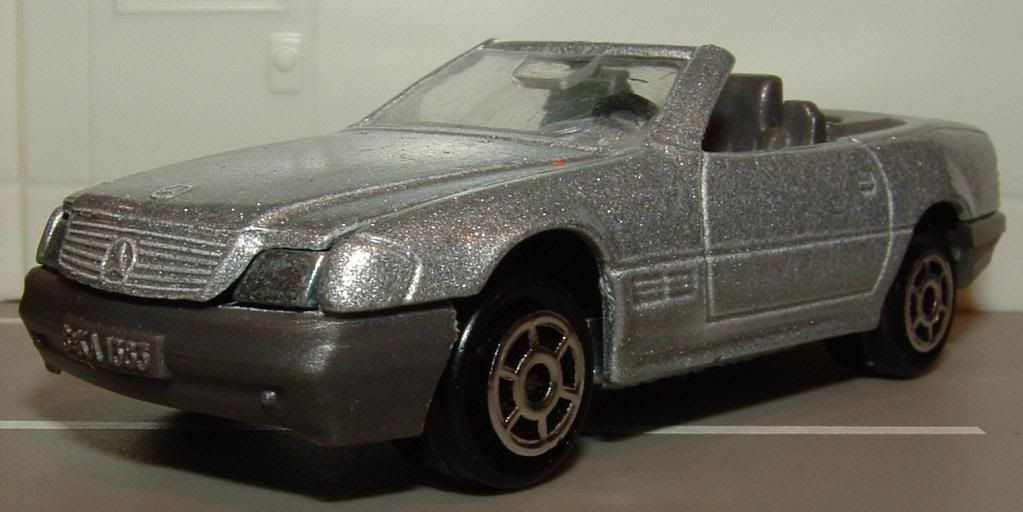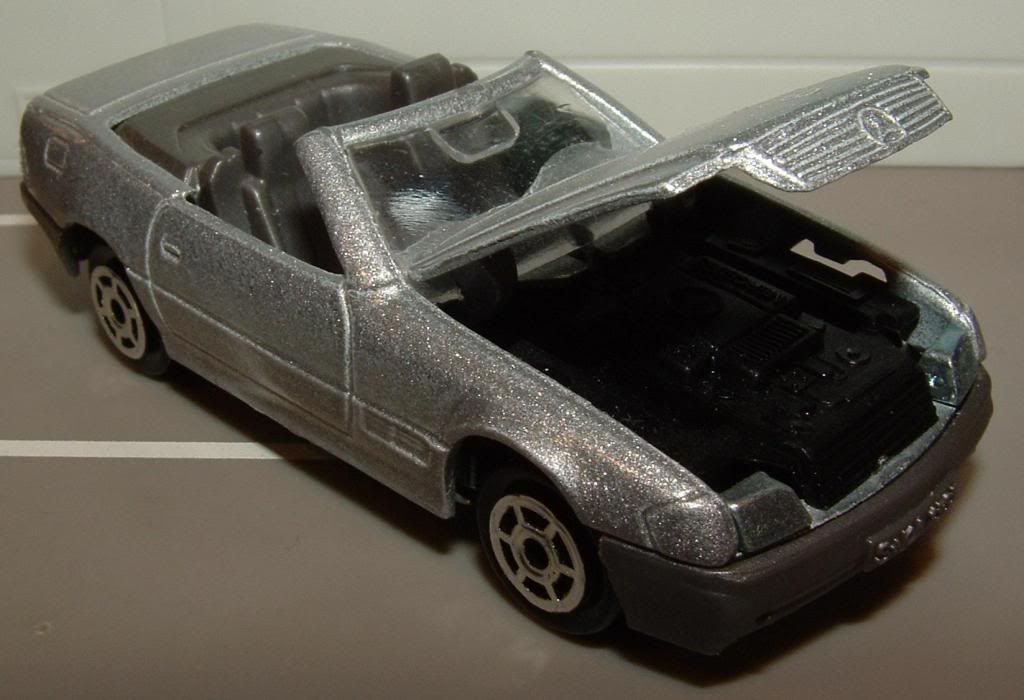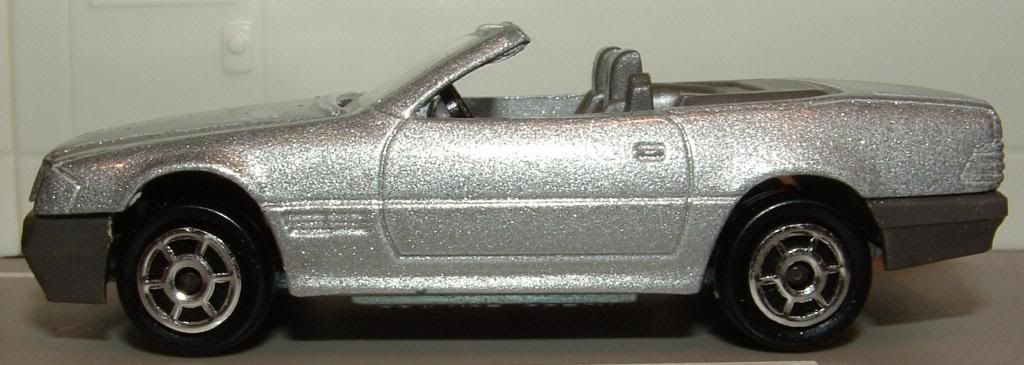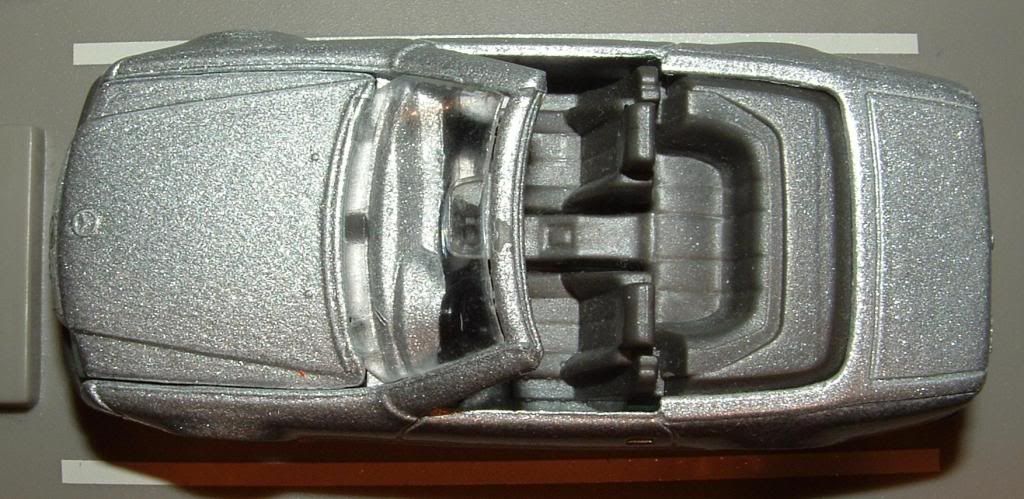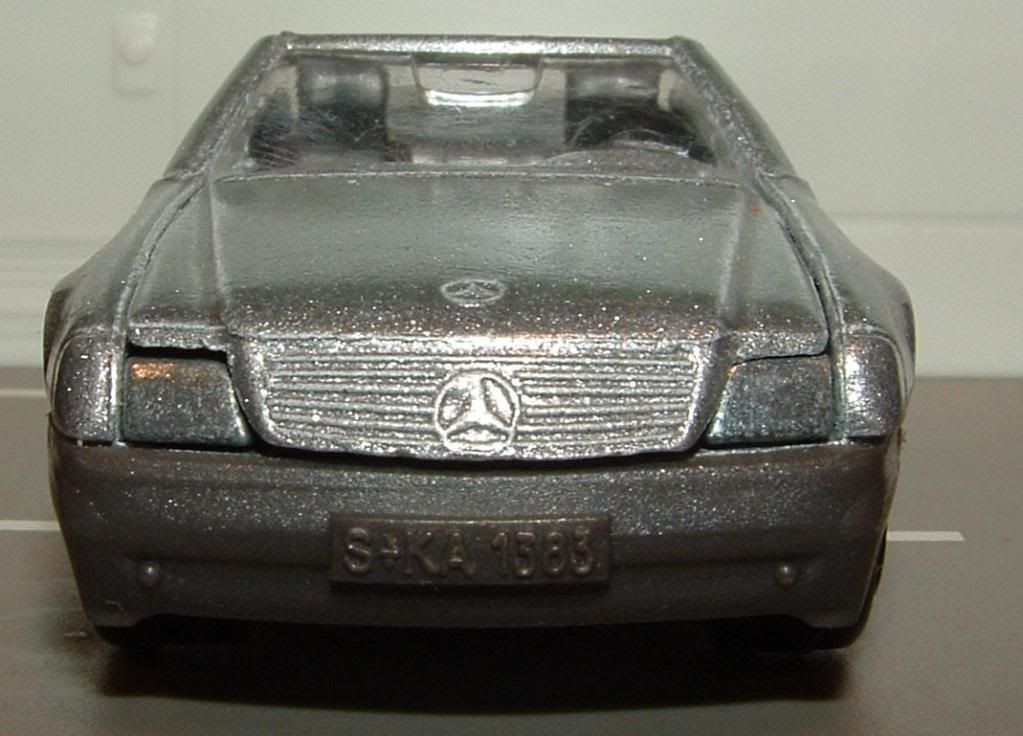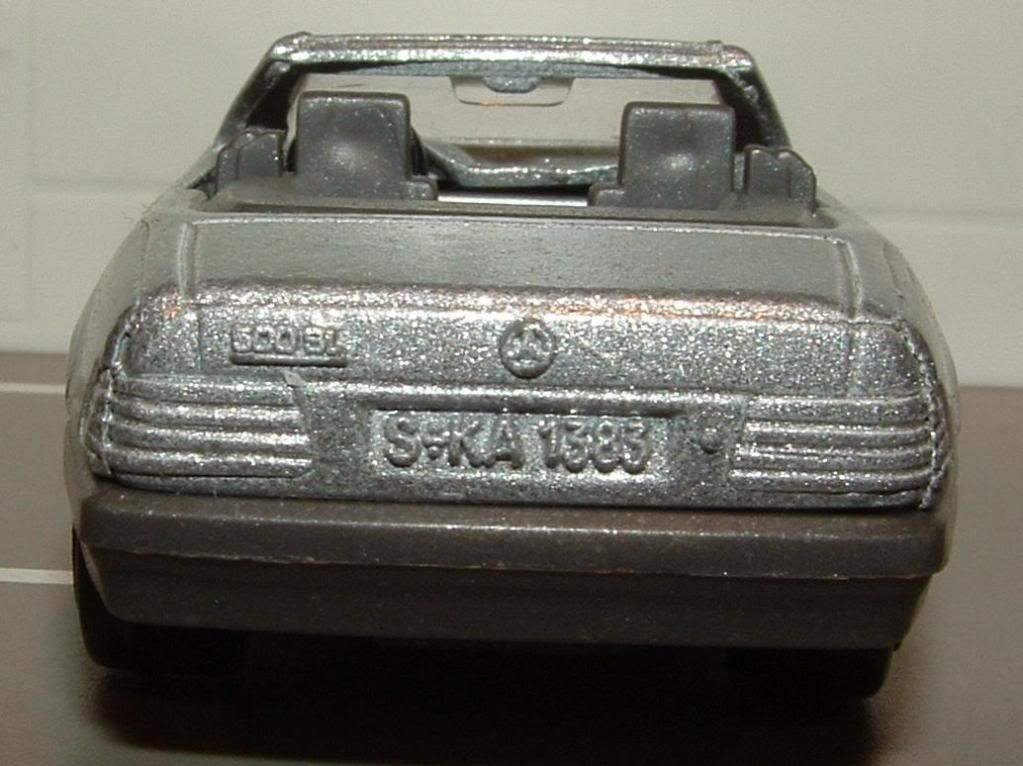
A blog focusing on 1/64 diecast from such popular brands as Hot Wheels, Matchbox, Johnny Lightning, M2 Machines, GreenLight, Tomica, Yat Ming, Majorette, MotorMax, Siku, Corgi, Guisval, Playart, Ertl, Zylmex, Racing Champions, & many more. Swifty's Garage features a daily Car Of The Day and news updates from your favorite brands!
Tuesday, November 30, 2010
Car Of The Day: November 30, 2010
Today's car of the day is Yat Ming's 1979 Pontiac Firebird.
The Pontiac Firebird was built by the Pontiac division of General Motors between 1967 and 2002. The Firebird was introduced the same year as its platform-sharing cousin, the Chevrolet Camaro. This coincided with the release of the 1967 Mercury Cougar, which shared its platform with another pony car, the Ford Mustang.
The vehicles were, for the most part, powered by various V8 engines of different GM divisions. While primarily Pontiac-powered until 1977, Firebirds were built with several different engines from nearly every GM division until 1982 when GM began to discontinue engines it felt were unneeded and either spread successful designs from individual divisions among all divisions or use new engines of corporate architecture.
For more information and pictures of the real car please visit: Pontiac Firebird
A nice casting by Yat Ming, but this tooling dates back about twenty-five to thirty years now and it shows. The wheel choice is subpar, but the insert for the taillights remains a nice touch. The headlights are actually attached to the base! This one also seems to ride a bit high in the front.
The second generation debut for the 1970 model year was delayed until February 26, 1970, because of tooling and engineering problems; thus, its popular designation as a 1970½ model, while leftover 1969s were listed in early Pontiac literature without a model-year identification.
Trims:
Firebird
Firebird Esprit
Firebird Formula
Firebird Trans-Am
Firebird Skybird
Firebird Redbird
Firebird Yellowbird
Special versions:
Special Edition (popular 'Bandit')
Gold Special Edition
Macho Trans-Am (made by one of the Pontiac dealers)
1976 50th (Pontiac) Anniversary Edition
1979 10th (Trans Am) Anniversary Edition
1980 Pace Car Indy 500 Edition (turbo Trans Am)
1981 NASCAR Edition (turbo Trans Am).
Replacing the "Coke bottle" styling was a more "swoopy" body style, with the top of the rear window line going almost straight down to the lip of the trunk lid—a look that was to epitomize F-body styling for the longest period during the Firebird's lifetime. The new design was initially characterized with a large C-pillar, until 1975 when the rear window was enlarged.
There were two Ram Air 400 cu in (6.6 L) engines for 1970: the 335 hp (250 kW) Ram Air III (366 hp (273 kW) in GTO) and the 345 hp (257 kW) Ram Air IV (370 hp (280 kW) in GTO) that were carried over from 1969. The difference between the GTO and Firebird engines was the secondary carburetor linkage which prevented the rear barrels from opening. Bending the linkage to allow full carburator operation resulted in identical engines.
A distinctive, slant-nose facelift occurred in 1977, redone somewhat in 1979. From 1977 to 1981, the Firebird used four square headlamps, while the Camaro continued to retain the two round headlights that had previously been shared by both Second Generation designs. Curb weights rose dramatically in the 1973 model year due to the implementation of 5 mph (8.0 km/h) telescoping bumpers and various other crash and safety related structural enhancements; SD455 Trans Ams weighed in at 3,850 lb (1,750 kg).
The 455 engine available in the second generation Firebird Trans Am was arguably the last high-performance engine of the original muscle car generation. The 455 cu in (7.5 L) engine first made its appearance in 1971 as the 455-HO. In 1973 and 1974, a special version of the 455, called the SD-455, was offered. The SD-455 consisted of a strengthened cylinder block that included 4-bolt main bearings and added material in various locations for improved strength. Original plans called for a forged crankshaft, although actual production SD455s received nodular iron crankshafts with minor enhancements. Forged rods and forged aluminum pistons were specified, as were unique high flow cylinder heads. A 1967 GTO Ram Air camshaft with 301/313 degrees of advertised duration, 0.407 inch net valve lift, and 76 degrees of valve overlap was specified for actual production engines in lieu of the significantly more aggressive Ram Air IV style cam that had originally been planned for the engine (initially rated at 310 hp (230 kW) with that cam), but proved incapable of meeting the tightening emissions standards of the era. This cam, combined with a low compression ratio of 8.4 (advertised) and 7.9:1 actual resulted in 290 SAE net horsepower. Production test cars yielded 1/4 mile times in the 14.5 second/98 MPH range in showroom tune - results consistent for a car with a curb weight of 3,850 pounds and the rated 290 SAE net horsepower figure some sources suggest was "under-rated," High Performance Pontiac magazine dyno-tested an SD and gave it 371 SAE net rating. During a 1972 strike, the Firebird (and the sister F-body Camaro) were nearly dropped. Pontiac offered the 455 for a few more years, but tightening restrictions on vehicle emissions guaranteed its demise. Thus, the 1976 Trans Am was the last of the "Big Cube Birds," with only 7,100 units produced with the 455 engine.
The 1974 models featured a redesigned "shovel-nose" front end and new wide "slotted" taillights. In 1974, Pontiac offered two base engines for the Firebird: a 100 hp (75 kW) 250 cu in (4.1 L) inline-6 and a 155 hp (116 kW) 350 cu in (5.7 L) V8. Available were 175 hp (130 kW) to 225 hp (168 kW) 400 cu in (6.6 L) V8 engines, as well as the 455 cu in (7.5 L) produced 215 hp (160 kW) or 250 hp (190 kW), while the SD-455 produced 290 hp (220 kW). The 400, 455, and SD-455 engines were offered in the Trans Am and Formula models during 1974.
The 1975 models featured a new wraparound rear window with a revised roofline. The Super Duty engines, Muncie 4-speed, and TurboHydramatic were no longer available in 1975. The 400 and 455 engines were optional above the base six and V8 in the 1975 and 1976 models.
In 1976, Pontiac celebrated their 50th Anniversary, and a special edition of the Trans Am was released. Painted in black with gold accents, this was the first anniversary Trans Am package and the first production Black and Gold special edition. In 1977, Pontiac offered the T/A 6.6 Litre 400 (RPO W72) rated at 200 hp (150 kW), as opposed to the regular 6.6 Litre 400 (RPO L78) rated at 180 hp (130 kW). In addition, California and high altitude cars received the Olds 403 engine, which offered a slightly higher compression ratio and a more usable torque band than the Pontiac engines of 1977. 1977 Trans-Am Special Edition became famous after being featured in Smokey and the Bandit, later in 1979 model was used for Smokey and the Bandit II.
Beginning in 1978, Pontiac engineers reversed years of declining power by raising the compression ratio in the Pontiac 400 through the installation of different cylinder heads with smaller combustion chambers (1977 pontiac 400 engines also had the 350 heads bolted to the 400 blocks, these heads were known as the 6x-4 heads)(taken from the Pontiac 350). This increased power by 10% for a total of 220 during the 1978-79 model years. The 400/403 options remained available until 1979, when the 400 CID engines were only available in the 4-speed transmission Trans Ams and Formulas (the engines had actually been stockpiled from 1978, when PMD had cut production of the engine). 1979 marked the 10th Anniversary of the Trans Am, and a special anniversary package was made available: silver paint with a silver leather interior. The 10th Anniversary cars also featured a special Firebird hood decal, which extended off of the hood and onto the front fenders. In 1979 Pontiac sold 116,535 Trans Ams which still holds the record to this day. In 1980, due to ever-increasing emissions restrictions, Pontiac dropped all of its large displacement engines.
1980 therefore saw the biggest engine changes for the Trans Am. The 301, offered in 1979 as a credit option, was now the standard engine. Options included a turbocharged 301 or the Chevrolet 305 small block.
In the final year of the Second Generation Firebirds (1981), Trans Am still used the same engines as it had in the previous model year, with the only change being the addition of a new electronic carburetion system.
Monday, November 29, 2010
Car Of The Day: November 29, 2010
Today's car of the day is Road Champs' 1986 Mercedes-Benz 500SEC.
The Mercedes-Benz W126 is a series of flagship vehicles manufactured by German automotive marque Mercedes-Benz. Premiering in September 1979 as the successor to the earlier W116 line, the W126 was the second generation of the Mercedes-Benz flagship to officially bear the S-Class name referring to Sonderklasse or "special class." The W126 was initially offered in straight-6, V8, and turbo diesel sedan models. In September 1981, 2-door coupé versions of the W126 were introduced. Compared to its predecessor, the W126 was more aerodynamic, fuel efficient, capacious, and powerfully engined. The W126 S-Class debuted a new Mercedes-Benz design style which was subsequently used on other vehicles in the company's lineup. The W126 line also introduced many Mercedes-Benz safety innovations, including the first airbag supplemental restraint systems, seatbelt pretensioners, and traction control.
The W126 had a twelve-year production run between 1979 and 1991, the longest of any S-Class generation since the flagship models were first built in the mid-1950s.
For more information and pictures of the real car please visit: Mercedes-Benz 500SEC
I love this casting- Road Champs of the '80s can be hit and miss in regards to casting accuracy- earlier ones tend to be better than later ones. This is one of the good ones, even if the paint scheme is less than tactful. That said, this one gets an irony bonus for featuring sponsorship from both Exxon and Texaco.
Following the debut of the 1970s generation W116 (which also included the flagship Mercedes-Benz 450SEL 6.9), Mercedes-Benz began plans for the next-generation S-Class model in October 1973. Codenamed "project W126," the project had specific goals: an improved ride, better handling, and improved fuel efficiency. These improvements were aimed at helping retain the S-Class' market leadership as the world's best-selling prestige luxury sedan. Following the 1970s oil crisis, Mercedes-Benz had made fuel efficiency an especially pertinent goal (named "Energy Program"), even in the large V8 engined versions of the S-Class.
In terms of the body design, the objective of the W126 design team, led by Mercedes-Benz's Bruno Sacco, was to produce a car that was sleeker and more aerodynamic than the previous model. The application of lighter materials and alloys combined with thorough wind tunnel testing to reduce overall drag meant the car consumed about 10% less fuel than its predecessor. The maximum speed was also increased (250 km/h in the most powerful model).
After six years of development, the W126 was formally introduced at the Internationale Automobil-Ausstellung (International Motor Show, or IAA) in Frankfurt on September 1979. The initial lineup featured seven models in standard (SE, SD) and long (SEL, SDL) wheelbase sedan body styles: the 280 SE/SEL, 380 SE/SEL, 500 SE/SEL and 300 SD. Technically, the long wheelbase (SEL) variants were codenamed V126, but this was not popularly known. In 1981, the coupé version (SEC) of the W126 S-Class premiered at the IAA with the 500 SEC model. In 1981, Wheels Magazine selected the W126 model 380 SE as its Car of the Year.
Four years after the introduction of the fuel-efficiency "Energy Program," the model range had been reworked completely. In September 1985, again at the IAA in Frankfurt, the reworked model range was reintroduced. Apart from visual changes to the bumpers, side covers and alloys, the changes made to the available collection of engine variants was most visible. Two newly-constructed 6 cylinder engines and new 4.2 and 5.6 litre V8's were added, and other engines were further upgraded.
The W126 generation was replaced by the W140 in 1992, although a satellite factory in South Africa is known to have continued production until 1994. The different body styles of the W126 S-Class achieved a combined sales total of 892,123 units (818,063 sedans and 74,060 coupés), making the W126 the most popular S-Class ever produced.
Two AMG-modified 500SEC were raced at the 1989 24 Hours of Spa. Both cars failed to finish, with one suffering gearbox issues, while others had issues with the rear axle.
Sunday, November 28, 2010
Super Celica To Wing Car: Toyota Supras In Small Scale
In 1979 Toyota added an inline six cylinder to the Celica and named it the Celica Supra (or Celica XX in Japan). The Supra went through four generations before being discontinued in 2002.
The first generation was from 1979-1981 and visually the cars were very similar to the Celica. The car was lengthened about 5 inches to accommodate the larger engine and there were a few other minor differences to tell them apart. This generation Supra was offered by Matchbox (as an XX) and Yat Ming. Tomica added a “Supra” sticker to their existing Celica casting, but this did not a Supra make.
Yat Ming MK I (in orange) & Tomica MK II (in white)
The second generation Celica Supra debuted in 1981 as a 1982 model. The Japanese models were still known as the Celica XX, but the car remained the Celica Supra in the rest of the world. The second generation Supra was differentiated from the Celica much more than the original car. In addition to having the front stretched to accommodate the larger engine, the cars share no body panels in front of the doors. The Supra had fully retracting headlights, a power bulge hood, and different (larger) taillights. This generation of Supra was very popular in small scale with models from Hot Wheels, Matchbox, Tomica, Welly, Yat Ming, Zylmex, Summer, and others. The Matchbox model featured an opening hatchback, while the Zylmex, Tomica, and Welly all had opening doors. The Welly is a copy of the Tomica, with added details including a switch from right hand drive to left hand drive.
Tomica Limited MK II XX
While the Celica was completely redesigned for 1986, and switched to front wheel drive, the Supra remained rear wheel drive, continuing on as the Celica Supra through mid year, when the third generation Supra was released. The MK III dropped the Celica moniker and retained rear wheel drive. While this was the best selling Supra generation, surprisingly, there are very few replicas in small scale. Tomica mocked up a prototype but it never entered production. Bluebox released an ’87 Supra with a cast over rear window, and in the early 2000s Summer released a highly stylized (and unlicensed) MK III also. The definitive MK III is CM’s rally car, however, a nice casting of a civilian MK III is a glaring omission in 1/64 scale. This would make a great candidate for a Tomica Limited Vintage Neo.
CM’s MK III rally
In 1993 the final generation of Supra debuted. The MK IV is usually considered the best of the breed by Supra enthusiasts, and is the first (and often only) Supra that comes to mind when someone hears the words. Pop-up headlights were gone, twin turbos were added, and a spoiler reminiscent of the Dodge Charger Daytona & Plymouth Roadrunner Superbird was standard (at least on the turbo models). The MK IV was replicated by Matchbox and Tomica when the car debuted, and a number of other manufacturers after it starred in “The Fast & The Furious”, among them Hot Wheels (the unlicensed “Super Tsunami”), Racing Champions, Jada, and Muscle Machines. Johnny Lightning was supposed to revive the Racing Champions casting but they eventually canceled the line of “Fast And Furious” cars they were planning to release when the latest movie came out.
Racing Champions MK IV
Muscle Machines MK IV
Muscle Machines MK IV JGTC
Matchbox MK IV
The first generation was from 1979-1981 and visually the cars were very similar to the Celica. The car was lengthened about 5 inches to accommodate the larger engine and there were a few other minor differences to tell them apart. This generation Supra was offered by Matchbox (as an XX) and Yat Ming. Tomica added a “Supra” sticker to their existing Celica casting, but this did not a Supra make.
Yat Ming MK I (in orange) & Tomica MK II (in white)
The second generation Celica Supra debuted in 1981 as a 1982 model. The Japanese models were still known as the Celica XX, but the car remained the Celica Supra in the rest of the world. The second generation Supra was differentiated from the Celica much more than the original car. In addition to having the front stretched to accommodate the larger engine, the cars share no body panels in front of the doors. The Supra had fully retracting headlights, a power bulge hood, and different (larger) taillights. This generation of Supra was very popular in small scale with models from Hot Wheels, Matchbox, Tomica, Welly, Yat Ming, Zylmex, Summer, and others. The Matchbox model featured an opening hatchback, while the Zylmex, Tomica, and Welly all had opening doors. The Welly is a copy of the Tomica, with added details including a switch from right hand drive to left hand drive.
Tomica Limited MK II XX
While the Celica was completely redesigned for 1986, and switched to front wheel drive, the Supra remained rear wheel drive, continuing on as the Celica Supra through mid year, when the third generation Supra was released. The MK III dropped the Celica moniker and retained rear wheel drive. While this was the best selling Supra generation, surprisingly, there are very few replicas in small scale. Tomica mocked up a prototype but it never entered production. Bluebox released an ’87 Supra with a cast over rear window, and in the early 2000s Summer released a highly stylized (and unlicensed) MK III also. The definitive MK III is CM’s rally car, however, a nice casting of a civilian MK III is a glaring omission in 1/64 scale. This would make a great candidate for a Tomica Limited Vintage Neo.
CM’s MK III rally
In 1993 the final generation of Supra debuted. The MK IV is usually considered the best of the breed by Supra enthusiasts, and is the first (and often only) Supra that comes to mind when someone hears the words. Pop-up headlights were gone, twin turbos were added, and a spoiler reminiscent of the Dodge Charger Daytona & Plymouth Roadrunner Superbird was standard (at least on the turbo models). The MK IV was replicated by Matchbox and Tomica when the car debuted, and a number of other manufacturers after it starred in “The Fast & The Furious”, among them Hot Wheels (the unlicensed “Super Tsunami”), Racing Champions, Jada, and Muscle Machines. Johnny Lightning was supposed to revive the Racing Champions casting but they eventually canceled the line of “Fast And Furious” cars they were planning to release when the latest movie came out.
Racing Champions MK IV
Muscle Machines MK IV
Muscle Machines MK IV JGTC
Matchbox MK IV
Car Of The Day: November 28, 2010
Today's car of the day is Hot Wheels' 1997 Panoz Esperante GTR-1.
The Panoz Esperante GTR-1 (also known as Panoz GTR-1 and later the Panoz GTP) was a race car developed by Panoz Auto Development and Reynard Motorsport for grand tourer endurance racing in 1997. Although named after the Panoz Esperante roadster, the GTR-1 actually bore no mechanical relation to the production Esperante, instead sharing only minor styling points. Only two road-legal GTR-1s were built to meet homologation requirements set forth by the ruling bodies which the racing cars ran under.
The GTR-1 competed in the FIA GT Championship and 24 Hours of Le Mans in Europe as well as the IMSA GT, United States Road Racing Championship, and American Le Mans Series in North America.
For more information and pictures of the real car please visit: Panoz Esperante GTR-1
I don't normally collect race cars if they don't resemble their road-going version, but this is an exception. I saw this one hanging on the pegs at K-Mart and it jumped into my shopping cart without hesitation. Panoz is not well represented in small scale, the paint scheme is gorgeous (love the color...and the clovers!), and this is easily the best this particular casting has ever looked.
Begun in 1996, Reynard Motorsports' special vehicles division began work with Panoz to begin development of a grand tourer style racing car meant for the upcoming FIA GT Championship in 1997. Don Panoz, wanting to keep an American-style of design, insisted that the car be based on his Esperante sports car in some way. Due to this, the Esperante GTR-1 became unique in comparison to its Mercedes-Benz, Lotus, Porsche, and McLaren counterparts in that, like the production Esperante, the engine was located in front of the cockpit. Although located behind the front axle to give it a balanced mid-engine layout, having the engine in front gave the car unusual proportions, including a large nose and a cockpit placed as far back in the body. The unusual look, including a large bulging intake in the center of the nose, earned the car the nickname "Batmobile" due to its resemblance to the car used by the comic book hero. Following the initial 1997 season, the bodywork was modified in 1998 by lengthening the front and rear bodywork for increased downforce and handling capabilities.
For an engine, Panoz attempted to keep the American theme by using a Ford V8 engine similar to the one used in his Esperante. Instead of the standard 4.6L V8, Panoz turned to Roush Racing of NASCAR fame to construct 6.0L V8s based on Ford engines. Panoz's Élan Power Products would maintain the V8 engines and continue in development.
In order to meet homologation requirements which said that racing cars had to be based on production, road legal cars, Panoz built a single GTR-1 which featured full interiors and minor modifications to make it able to be legally registered. This car has been retained by Don Panoz. It now features a slightly smaller 5.3L V8 instead of the full 6.0L V8 race engine, since rules allowed engine sizes to be modified in the racing cars.
Saturday, November 27, 2010
Car Of The Day: November 27, 2010
Today's car of the day is Matchbox's 1986 Ford RS200.
The Ford RS200 is a mid-engined, four-wheel drive sports car produced by Ford from 1984 to 1986. The road-going RS200 was based on Ford's Group B rally car and was designed to comply with FIA homologation regulations, which required 200 road legal versions be built. Despite some rumours to the contrary, the RS200 was not based on the European version of the Escort, as were both its predecessor and successor. It was first displayed to the public at the Belfast Motor Show.
For more information and pictures of the real car please visit: Ford RS200
Here's a survivor from my childhood. As you can see from the scrapes and dings, this one was run hard and put away broke. Considering the nature of this beast, that's oddly appropriate. Rallies are not known for being gentle on the cars competing in them. Pity Ford never imported this one to the USA- few would argue this was Ford's best car of the 1980s.
Following the introduction of the MKIII Escort in 1980, Ford Motorsport set about development of rear-wheel-drive, turbocharged variant of the vehicle that could be entered into competition in Group B rally racing, and dubbed the new vehicle the Escort RS 1700T. A problem-filled development led Ford to abandon the project in frustration in 1983, leaving them without a new vehicle to enter into Group B. Not wanting to abandon Group B or simply "write off" the cost of developing the failed 1700T, executives decided to make use of the lessons learned developing that vehicle in preparing a new, purpose-built rally car. In addition, Ford executives became adamant that the new vehicle feature four-wheel-drive, an addition they felt would be necessary to allow it the ability to compete properly with four-wheel-drive models from Peugeot and Audi.
The new vehicle was a unique design, featuring a plastic/fiberglass composite body designed by Ghia, a mid-mounted engine and four-wheel drive. The cars were built on behalf of Ford by another company well known for its expertise in producing fibreglass bodies - Reliant. To aid weight distribution, designers mounted the transmission at the front of the car, but this required that power from the mid mounted engine go first up to the front wheels and then be run back again to the rear, creating a complex drive train setup. The chassis was designed by former Formula One designer Tony Southgate, and Ford's John Wheeler, a former F1 engineer, aided in early development. A double wishbone suspension setup with twin dampers on all four wheels aided handling and helped give the car what was often regarded as being the best balanced platform of any of the RS200's contemporary competitors. Such was the rush to complete the RS200, the Ford parts bin was extensively raided - the front windscreen and rear lights were identical to those of the early Sierra, for example, while the side windows were cut-down Sierra items.
Power came from a 1.8 litre, single turbocharged Ford/Cosworth "BDT" engine producing 250 horsepower (190 kW) in road-going trim, and between 350 and 450 horsepower (340 kW) in racing trim; upgrade kits were available for road-going versions to boost power output to over 300 horsepower (220 kW). Although the RS had the balance and poise necessary to be competitive, its power to weight ratio was poor by comparison, and its engine produced notorious low-RPM lag, making it difficult to drive and ultimately less competitive. Factory driver Kalle Grundel's third place finish at the 1986 WRC Rally of Sweden represented the vehicle's best-ever finish in Group B rallying competition, although the model did see limited success outside of the ultra-competitive Group B class. However, only one event later, at Rally Portugal, a Ford RS200 was involved in one of the most dramatic accidents in WRC history, claiming the lives of 3 spectators and injuring many others. Another Ford RS200 was crashed by Swiss Formula One driver Marc Surer against a tree during the 1986 Hessen-Rallye in Germany, killing his co-pilot and friend Michel Wyder instantly.
The accident at Rally Portugal set off a chain reaction and the RS200 became obsolete after only one full year of competition as the FIA, the governing board, which at the time controlled WRC rally racing, abolished Group B after the 1986 season. For 1987, Ford had planned to introduce an "Evolution" variant of the RS200, featuring a development of the BDT engine (called BDT-E) displacing 2137 cc, developed by Briton Brian Hart. Power figures for the engine vary quite a bit from source to source, but output claims range from as "little" as 550 horsepower (410 kW) to as high as 815 horsepower (608 kW); it has been said that the most powerful Evolution models can accelerate from 0 to 60 miles per hour (97 km/h) in just over 2 seconds, depending on gearing. Upgraded brakes and suspension components were part of the package as well. The ban on Group B racing effectively forced the E2 model into stillbirth; however, more than one dozen of them were successfully run from August 1986 till October 1992 in the FIA European Championships for Rallycross Drivers events all over Europe, and Norwegian Martin Schanche claimed the 1991 European Rallycross title with a Ford RS200 E2 that produced over 650 bhp (480 kW).
One RS200 found its way in circuit racing originated as a road car; it was converted to IMSA GTO specification powered by a 750+ BHP 2.0 litre turbo BDTE Cosworth Evolution engine. Competing against the numerous factory backed teams such as Mazda, Mercury and Nissan, with their newly built spaceframe specials, despite being a privateer, the car never achieved any real success to be a serious contender and was kept by the original owner. A parts car was built in England and later used to compete in the Unlimited category at the Pikes Peak International Hill Climb, where it was driven by Swede Stig Blomqvist in 2001, 2002 and 2004 and in 2009 by former British Rallycross Champion Mark Rennison.
FIA's homologation rules for Group B cars required the construction of at least 200 road-legal RS200s, and Ford complied, building these 200 vehicles with spare parts for another 20+ units put aside for the racing teams. Those chassis and spare parts were later also used to build a couple of non-genuine, so-called bitsa cars.
A total of 24 of the 200 original cars were reportedly later converted to the so-called "Evolution" models, mostly marked by their owners as "E" or "E2" types. Ford's first intention was to mark the FIA-required 20 "Evo" cars as series numbers 201 to 220 but as this was actually not necessary according to the FIA rules they later kept their original series numbers (e.g. 201 = 012, 202 = 146, 203 = 174 etcetera).
The original bodywork tooling for the Ford RS200 was latterly bought by Banham Conversions, who used it to make a kit car version based on the Austin Maestro. Due to being a basic rebody of the Maestro, the Austin-Rover engine ancillaries are actually to be found at the front of the vehicle.
Friday, November 26, 2010
Tractor of the Week

Massey Ferguson developed a wide range of agricultural vehicles and have a large share in the market across the world especially in Europe. The companies first mass produced tractor was the Massey Harris Ferguson TVO which was quickly replaced by the Diesel 20. In 1958 the MF35, the first Massey Ferguson branded tractor (a Ferguson design) rolled off the factory floor. These tractors were massively popular and sold across the UK, Australia, Ireland and the United States
In the mid '80s the short-lived 600 series was released. This included the 675, 690, 690T, 695, 698 and 699. The reason for poor sale was due to poor looks and cab awkwardness compared to its predecessors.
In the mid '80s the short-lived 600 series was released. This included the 675, 690, 690T, 695, 698 and 699. The reason for poor sale was due to poor looks and cab awkwardness compared to its predecessors.
November 26, 2010
Today's car of the day is Guisval's 1987 Renault 21 Nevada (aka Renault and later Eagle Medallion).
The Renault 21 is a large family car produced by French automaker Renault between 1986 and 1994. It was also sold in North America through American Motors (AMC) dealers as the Renault Medallion and the Eagle Medallion.
The Renault 21 sedan was launched in early 1986 as the successor to the extremely successful Renault 18, and this was followed a few months later by the seven-seater station wagon 21 Nevada (known as the Savanna in the United Kingdom), a rival for the Peugeot 505 Family Estate.
Unusually, the Renault 21 was offered with disparate engine configurations. The 1.7 litre version featured an 'east-west' (transversely) mounted engine, but Renault had no gearbox suitable for a more powerful transverse engine: accordingly, faster versions featured longitudinally mounted (north south) engines. The two versions featured (barely perceptibly) different wheel bases: the engines were all relatively compact four cylinder units and the engine bay was large enough to accept either configuration without reducing passenger space. However, at a time when production technologies were relatively inflexible, the need to assemble differently configured engine bays on a single production line, along with the supplementary inventory requirements imposed both on Renault and on the dealership network, did compromise the Renault 21's profitability.
For more information and pictures of the real car please visit: Renault 21 Nevada
Another geographic hodgepodge car (like last week's Siku/Germany Alfa Romeo/Italy Montreal/Canada) this time we're treated to Guisval (Spain)'s replica of a Renault (France) 21 Nevada (USA). It's a fairly nice casting and features opening doors. The paint is very nice for a Guisval- no silly tampos on this one! I know the door-gap crowd will be up in arms over it though, but for a Guisval this is very nice.
In 1986, the R21 was launched. It had a razor-like design, which was different from contemporary cars of the era, e.g. the Ford Sierra (with its "jelly mould" design) and the Opel Ascona (with its J-Car design).
The car was revamped considerably in 1989, both technically and aesthetically - the new sleeker outward appearance was similar to the also recently revamped Renault 25, and a liftback body style was also added to the range (which soon became more popular than the sedan in France) along with a sporty 2.0 L Turbo version. The turbo was also available with the four wheel drive Quadra transmission, and was capable of 227 km/h.
The Renault 21 liftback and sedan petrol-fueled models ceased production in early 1994 on the launch of the all-new Laguna liftback, but the diesels and the Nevada (Savanna in the UK) remained on the market until their replacement Laguna variants were launched (late 1994 for the diesels and late 1995 for the Nevada (Savanna)).
The 21 also continued production in Argentina for some years after its European demise. The 21 was crafted in Argentina, at the Santa Isabel (Cordoba) Renault facility since late 1988 until early 1996.
All three body styles have been built there: liftback, sedan and Nevada (station wagon). It has been equipped with both petrol and diesel engines. The only petrol engine available was the 2.2 litre 8-valve (carburettor for the starting production, injection for the later models), and the only diesel engine available was the 2.1 litre. Both engines were available for the three body versions.
R21's were manufactured in Turkey in early 90's under the name Optima (entry model), Manager (later Manager 2000 with 2-litre engine), and (top of the line) Concorde.
The R21 was also sold in North America for a brief period as the Medallion, with the 2.2-litre engine being the only powerplant. However, the car was only on sale for a few months in 1987 before Renault sold its investment in American Motors (AMC) to Chrysler.
AMC dealers were now under a newly formed Jeep-Eagle Division of Chrysler, and continued to sell the car under the name Eagle Medallion until 1989.
The 21 was launched in Colombia in late 1987 with 2.0L longitudinal engine. Unfortunately warranty problems with cooling system, front suspension, and power steering compromise the 21's brand. Problems were difficult to solve for Renault and SOFASA (Colombia's assembly plan for Renault). The 21's reputation for Colombian customers was destroyed from since, even making Phase II being sold as the Renault Etoile in Colombia between 1990 and 1995.
Thursday, November 25, 2010
Car Of The Day: November 25, 2010
Today's car of the day is Racing Champions' 1996 Ford Mustang Cobra.
For 1994, the Mustang underwent its first major redesign in fifteen years. The design, code named "SN-95" by Ford, was based on an updated version of the Fox platform. It featured dramatic new styling by Patrick Schiavone that incorporated some stylistic elements similar to those of earlier Mustangs. A convertible model would also return, but the notchback and hatchback body styles used in earlier Mustangs were not available. Prior to the redesigned Mustang's launch, a 2-seater concept car called the Mustang Mach III was shown at the 1993 North American International Auto Show in Detroit and hinted at what future Mustangs might look like. The production Mustang resembled the Mach III concept's sweeping body curves. The Mach III concept also featured a supercharged 4.6 L DOHC V8 with 450 hp (336 kW; 456 PS). While this engine was not put into production, it hinted to the future use of Ford's Modular V8 in the Mustang, including the eventual use of a supercharged 4.6 L V8.
For more information and pictures of the real car please visit: Ford Mustang
Not the best 4th generation Mustang casting on the market, this is from the budget line Racing Champions put out in the late 1990s. Cars like this used to be available at around $.50 just ten years ago.
The base Mustang featured a 3.8 L OHV V6 mated to a standard 5-speed manual transmission or an optional AODE 4-speed automatic transmission. The V6 produced 145 hp (108 kW; 147 PS) at 4000 rpm and 215 lb·ft (292 N·m) of torque at 2500 rpm. For 1996, the base V6 gained five horsepower with a new powertrain control module (PCM), the EEC-V. The AODE transmission was replaced with the 4R70W 4-speed automatic transmission for 1996.
Ford allocated $700 million to improve the Fox platform for the 1994 Mustang. Efforts were made to improve the car's handling as well as noise, vibration, and harshness (NVH) conditions over the previous generation Mustang. The Mustang's front suspension makes use of MacPherson struts with longer lower control arms, new spindles, anti-roll bars, and other enhancements over 1993 and older Mustangs. In the rear, a four-bar link solid axle is used. The 1994 Mustang's standard final drive ratio was 2.73:1, though this was later changed to 3.27:1. All Mustangs received standard four-wheel disc brakes, though anti-lock brakes (ABS) were optional.
Along with its new exterior, the 1994 Mustang received new interior styling. The Mustang's cabin featured a "dual-cockpit" layout that was adorned with contours and sweeping curves, similarly to other Fords of the time such as the Thunderbird. The 1994 Mustang offered many amenities and conveniences, a number of which later became standard equipment. The preferred equipment package came with power windows, mirrors, and door locks, remote keyless entry, air conditioning, cruise control, and a trunk cargo net. Also available was Ford's Mach 460, 230-watt multi-speaker sound system with CD player. All 1994 Mustangs received standard three-point seat belts and dual front airbags.
Building on the base Mustang, the Mustang GT was reintroduced for 1994, featuring higher performance and better handling than the base Mustang or its 1993 predecessor. Ford carried over the 302 CID Windsor pushrod small-block V8 engine (called the "5.0 L" although its capacity was 4.94 L) from the 1993 Mustang GT. Total output from the engine was 215 hp (160 kW; 218 PS) at 4200 rpm and 285 lb·ft (386 N·m) of torque at 3500 rpm. Though more refined, the 5.0 L V8 actually saw a drop in output for 1994 from the 1993 model year due to stricter emissions control. Mustang GTs could deliver zero to 60 mph (97 km/h) acceleration times in the mid-six second range and complete a quarter mile in about 15 seconds. The Mustang GT also featured a stiffer handling suspension, a 3.08:1 final drive ratio (later changed to 3.27:1 or 3.55:1 depending on the transmission and model year), dual exhausts, and larger 16-inch (410 mm) wheels (compared to the base Mustang's 15-inchers). The 1994 Mustang GT was named Motor Trend Car of the Year.
For 1995, a one-year model referred to as the Mustang GTS was introduced. This was considered to be a "stripped down" version of the Mustang GT that included the performance parts of the GT model, but a minimum of non-performance related features.
Ford dropped the 302 CID Windsor V8 that was in production since 1968, and the 1996 model year introduced the Modular 4.6 L SOHC V8. The new engine produced 215 hp (160 kW; 218 PS) at 4400 rpm and 285 lb·ft (386 N·m) of torque at 3500 rpm, matching the output of its predecessor. For 1998, the 4.6 L V8 received a small increase an output resulting in 225 hp (168 kW; 228 PS) at 4750 rpm and 290 lb·ft (393 N·m) of torque at 3500 rpm. This was achieved through PCM calibration and a modified fuel system. Though capable of matching or exceeding the older 302 V8's output, the 4.6 L V8 was criticized for delivering inadequate performance, particularly against the larger displacement of the OHV V8 used in the Mustang's chief rival, the Chevrolet Camaro.
Building on the performance of the Mustang GT, Ford's Special Vehicle Team (SVT) developed an even higher performance car: the Mustang Cobra. Compared to the Mustang GT, the Cobra featured a revised suspension, wider tires, and larger brakes in addition to unique styling elements. For 1994 and 1995, the Cobra made use of the same 5.0 L V8 as the Mustang GT of the same model years. The Cobra's 5.0 produced 25 hp (19 kW) more power for a total of 240 hp (179 kW; 243 PS). For 1996, accompanying the Mustang GT's new V8, the Cobra received a new, all-aluminum 4.6 L 32 valve DOHC V8 producing 305 hp (227 kW; 309 PS) at 5800 rpm and 300 lb·ft (407 N·m) of torque at 4800 rpm.
Wednesday, November 24, 2010
Car Of The Day: November 24, 2010
Today's car of the day is Majorette's 1990 Mercedes-Benz 500SL.
The Mercedes-Benz SL is a roadster manufactured by Mercedes since 1954. The designation SL derives from the German Sport Leicht, or Sport Light — and was first applied to the 300SL 'Gullwing' named also after its gullwing or upward-opening doors.
The term SL-Class refers to the marketing variations of the vehicle, including the numerous engine configurations spanning five design generations.
For more information and pictures of the real car please visit: Mercedes-Benz 500SL
Matchbox and Majorette both did this car, and interestingly enough, silver seems to be the most common variation of both (at least in my travels). I give the nod to the Majorette as the better casting, though some of that is my bias towards the opening hood with engine details.
The 1989 Mercedes SL base model was the 228 hp (170 kW) 3.0 L inline 6 300SL version in the US. In Europe the base model was the 190 hp (140 kW) 3.0 L inline 6 300SL with 12 valves, and the 228 hp (170 kW) 3.0 L inline 6 with 24 valves is known as the 300SL 24 . But it was the 322 hp (240 kW) 500SL (with a 5.0 L V8 engine) which made the most headlines. The specification was high, with electric windows, mirrors, seats and roof.
1994 saw a huge facelift for the SL, and the 300SL was replaced in Europe by the SL280 and SL320 (with 2.8 L and 3.2 L I6 engines). The SL500 continued with the same powerful engine. A 389 hp (290 kW) 6.0 L V12 SL600 topped the range. Introduced in 1993 as the 600SL, it was re-badged the SL600 in 1994.
The SL320 replaced the 300SL in the United States in 1995, but the SL280 was not offered. The 6-cylinder SLs were dropped from the US lineup in 1998, leaving just the V8 and V12. The SL500 got a new 302 hp (225 kW) 5.0 L V8 for 1999.
The Mercedes-Benz R129 automobiles were produced from 1989 through 2001. They were sold under the SL-Class model names. The R129 replaced the R107 SL-Class in 1989 and was in its turn replaced by the R230 in 2001.
Subscribe to:
Comments (Atom)
